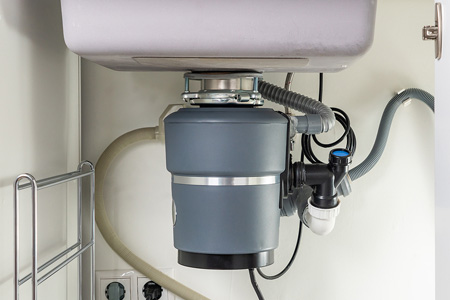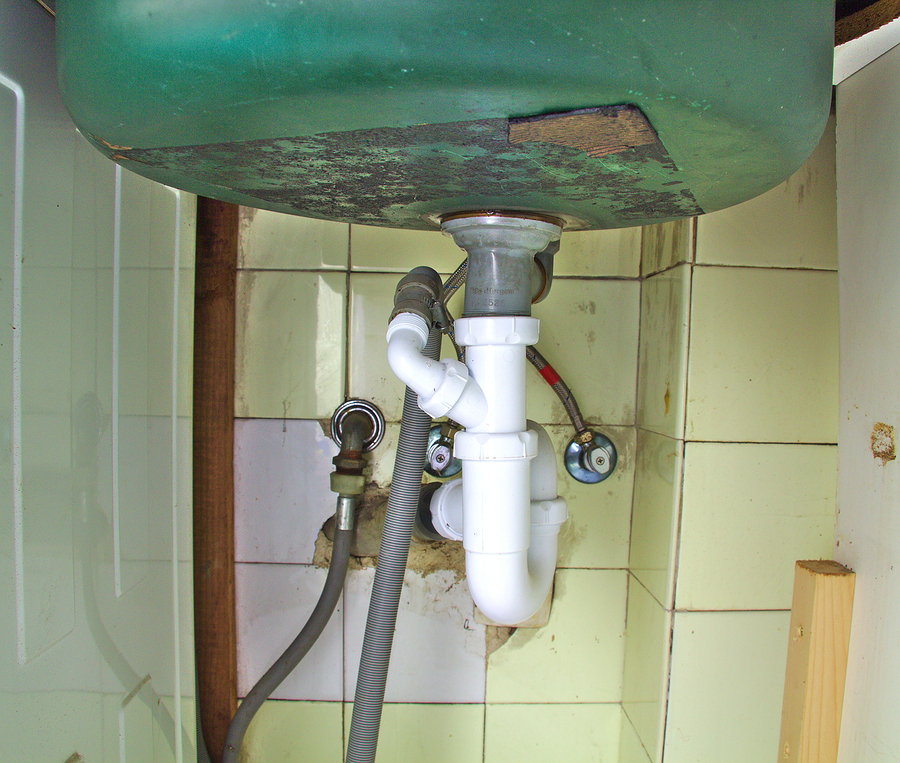We've uncovered this article on Tips on Fixing a Leaking Garbage Disposal directly below on the web and figured it made perfect sense to write about it with you in this article.

Garbage disposals are necessary kitchen area home appliances that aid in throwing away food waste efficiently. Nonetheless, a dripping waste disposal unit can be a discouraging and messy problem to handle. The good news is, several leakages can be fixed quickly with a few straightforward steps. In this post, we will certainly talk about how to fix a leaking waste disposal unit efficiently.
Intro
Garbage disposals are installed under cooking area sinks and are developed to shred food waste right into smaller pieces, allowing it to travel through the plumbing system conveniently. While these gadgets are generally reliable, leaks can happen with time as a result of damage, loosened links, or damages to the device.
Usual Causes of Leaks in Garbage Disposals
Worn Seals and Gaskets
Seals and gaskets play an important function in avoiding water from leaking out of the garbage disposal. Over time, these components can wear away, bring about leakages around the disposal unit.
Loose Links
The links in between the garbage disposal and the plumbing system can become loose with time, triggering water to leakage out throughout operation.
Fractures or Holes in the Disposal System
Physical damages to the waste disposal unit, such as splits or openings in the real estate, can also result in leakages.
Identifying the Resource of the Leakage
Prior to attempting to take care of a leaking waste disposal unit, it is essential to recognize the resource of the leak. This can usually be done through visual inspection or by carrying out simple examinations.
Visual Inspection
Evaluate the garbage disposal unit meticulously for any type of signs of water leak. Pay close attention to locations around seals, gaskets, and connection factors.
Testing for Leakages
One means to check for leaks is by running water via the disposal device and checking for any type of noticeable indications of leak.
Tools and Materials Needed for Dealing With a Dripping Waste Disposal Unit
Prior to starting the repair service procedure, gather the required devices and products, including a screwdriver, flexible wrench, plumbing technician's putty, substitute seals or gaskets, and epoxy or patching product for repairing cracks or holes.
Step-by-Step Overview to Dealing With a Dripping Waste Disposal Unit
Turn Off the Power
Before trying any type of repairs, make sure that the power to the waste disposal unit device is shut off to stop the risk of electrical shock.
Situate the Leak
Determine the precise area of the leak and identify the cause.
Tighten Connections
Utilize a wrench to tighten any type of loosened links in between the disposal device and the pipes system.
Change Seals or Gaskets
If the leakage is due to worn seals or gaskets, get rid of the old parts and change them with brand-new ones.
Patching Splits or Openings
For splits or openings in the disposal device, usage epoxy or an appropriate patching material to secure the damaged area.
Checking the Waste Disposal Unit After Repair
Once the repair is full, check the garbage disposal by running water via it to make sure that the leak has actually been dealt with.
Preventive Upkeep Tips to Prevent Future Leaks
To stop future leaks, it is necessary to execute routine upkeep on your garbage disposal. This consists of maintaining it clean, preventing placing non-food items or difficult objects down the disposal, and occasionally checking for leaks or various other problems.
Final thought
In conclusion, repairing a dripping garbage disposal is a reasonably simple procedure that can be finished with standard tools and products. By adhering to the actions described in this article and practicing preventative maintenance, you can maintain your garbage disposal in good working condition and stay clear of expensive repairs in the future.
HERE’S HOW TO FIX YOUR GARBAGE DISPOSAL
WHAT TO DO IF SOMETHING IS STUCK IN YOUR GARBAGE DISPOSAL
If the impeller won’t turn, there’s probably something stuck in the disposal. It could be a steak bone or peach pit, although plumbers report pulling all sorts of inappropriate objects out of disposals, such as bottle caps or aluminum foil. Make sure power to the disposal is off, and look inside to see if you can see the source of the jam.
Never stick your fingers in a disposal. Pull out anything you see with tongs or pliers.
If the disposal still won’t work, it may be time to call a plumber or consider buying a new disposal. GEM Plumbing & Heating is here for all of your garbage disposal needs.
WHAT TO DO IF YOUR GARBAGE DISPOSAL DRAIN IS CLOGGED
Take everything out from underneath your sink and put a bucket or other container under your disposal to catch any water that drains out. Disconnect your disposal from the power supply. If it’s plugged into a wall outlet, unplug it. If it’s hardwired into an electrical box, go to the electrical panel and turn off the breaker for the disposal. Pour ¼ cup of baking soda into the drain, followed by ½ cup of white vinegar. Give the solution a few minutes to fizz and do its work. Look into the disposal with a flashlight to see if you can see an object that might be causing the clog. If you see it, remove it using tongs or pliers. MORE TIPS ON DEALING WITH A CLOGGED GARBAGE DISPOSAL
Never use drain cleaner in a garbage disposal. It can damage the plastic parts inside the disposal. You can also be splashed with the caustic liquid while working to clear the clog. Beware! Never stick your fingers into a garbage disposal. Trust us — not a good idea. In many instances, your dishwasher drains through your garbage disposal. This allows the disposal to grind any large food particles that may be drained out of your dishwasher. There are some jurisdictions, however, where the plumbing code prohibits such a connection. WHAT TO DO WHEN YOUR DISHWASHER DRAINS THROUGH THE DISPOSAL
Run some water in the sink so your plunger has at least a ½-inch of water to create a seal and plunge vigorously up and down several times. You may need to repeat this several times. Run hot water down the drain to clear any residue that remains.

We hope you enjoyed our post about Why Is My Garbage Disposal Leaking From the Bottom?. Many thanks for taking a few minutes to read our content. Sharing is nice. Helping others is fun. Thanks a lot for your time. Please check up our website back soon.
Click Here